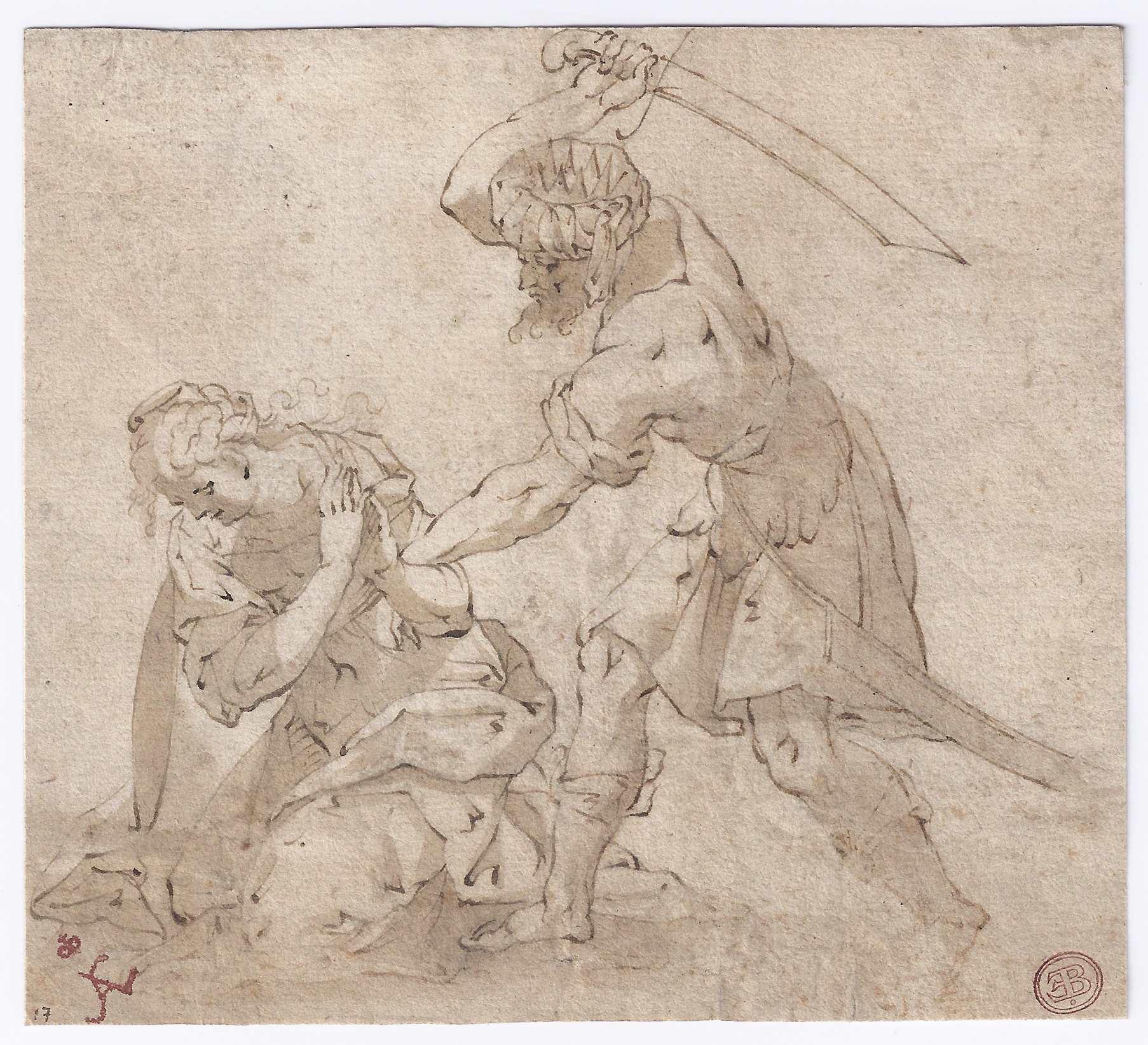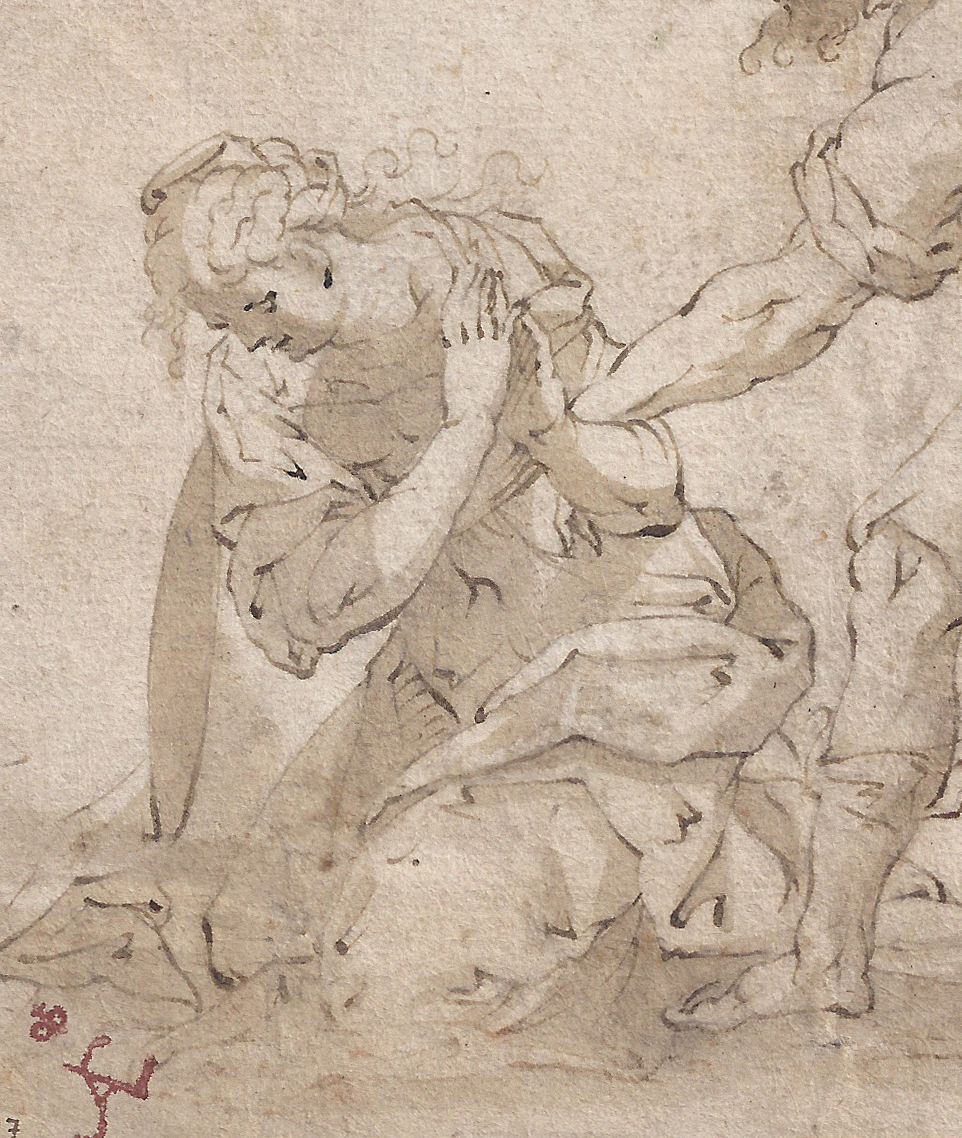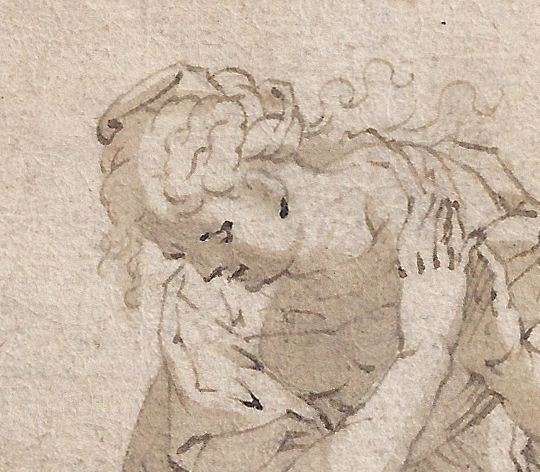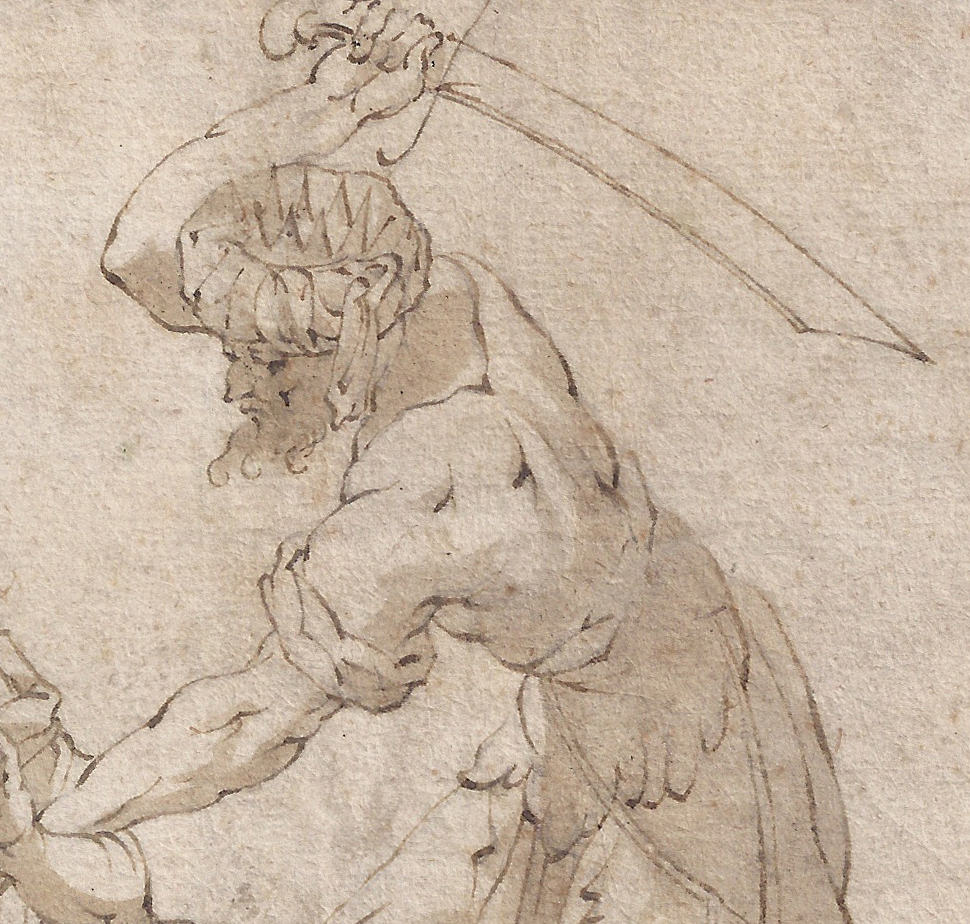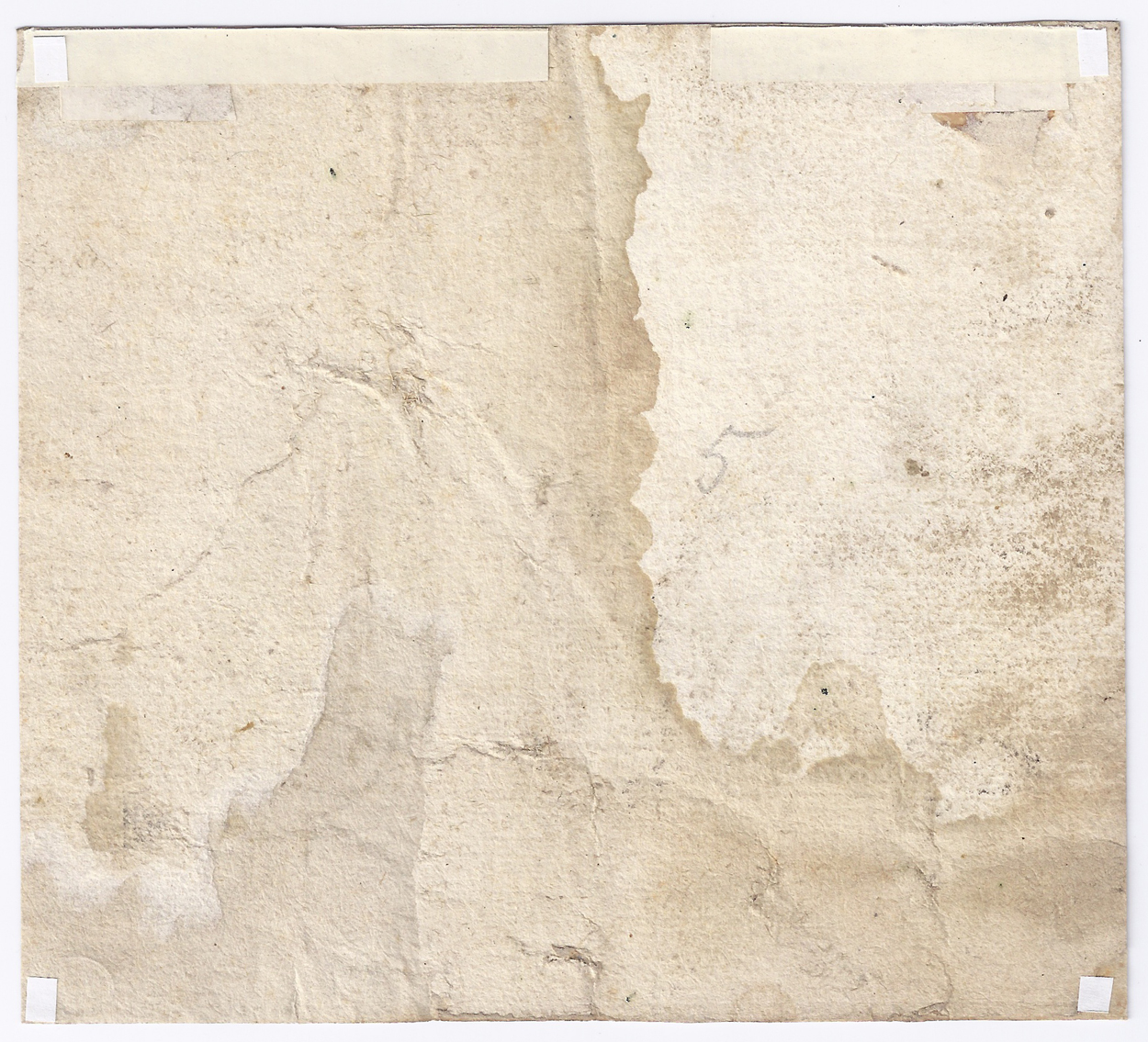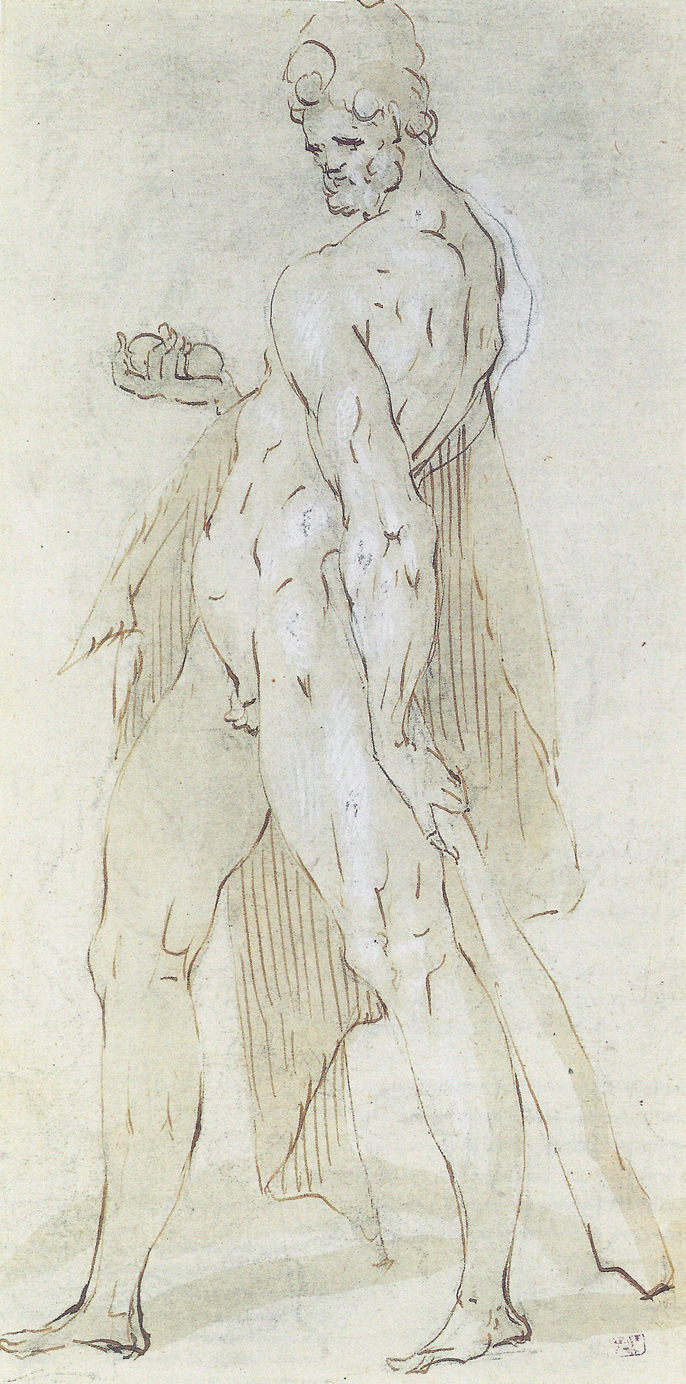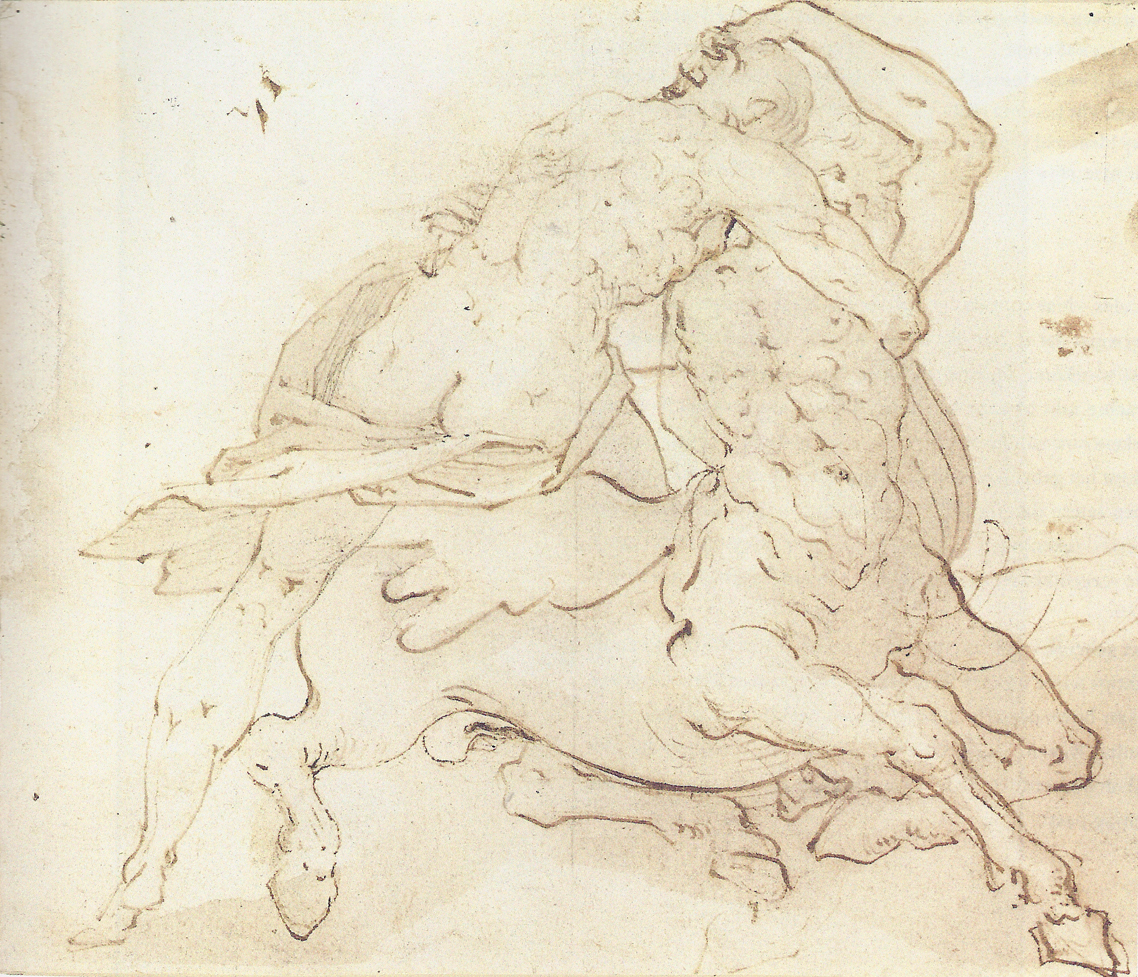ADRIAEN DE VRIES (The Hague 1556 – 1626 Prague)
Adriaen de Vries (The Hague 1556 – 1626 Prague)
The Martyrdom of St Catherine
Pen and brown ink, brown wash, 133 x 147 mm (5.2 x 5.8 inch)
Bears numbering in brown ink, lower left: 17
Provenance
- Stanislas d’Albuquerque (Lugt 3147)
- E. Blum, London (bears his mark, not in Lugt)
- Sotheby's, New York, 25 January 2012, lot 135
***
Adriaen de Vries’s career epitomizes the internationalism of the late Mannerist period. He was born in The Hague, trained in Italy, and worked mainly in Prague. His is the time-honoured tradition of the itinerant artist, working for many of Europe’s most discerning royal patrons. Little is known about De Vries until 1581, when he was an assistant in Giambologna’s Florentine workshop. There he trained as a bronzeworker and absorbed much of Giambologna’s sophisticated Mannerist style. De Vries’s association with Rudolf II, Holy Roman Emperor, whose rare works of art were the greatest collection of the age, began in 1593. He became court sculptor in 1601. Among de Vries’s works for the reclusive monarch was a bronze relief representing Rudolf’s 1585 imperial decree that painting should be considered among the liberal arts. The idea that visual artists should be raised above the level of craftsmen developed during the Italian Renaissance, but Rudolf II made it official. After Rudolf’s death in 1612, De Vries continued working for aristocratic clients, creating numerous funerary monuments, life-size sculptures, fountains, and church fonts. In his late style, he worked the bronze to create a soft, sketchy effect.
Like many other sculptors of the day, De Vries tended to work out designs on paper before realising them in three-dimensional form. This aspect of De Vries’s oeuvre has only been recognised in the last decades: whereas only a single sheet was known in 1967, about a dozen drawings have been identified today. The earliest drawings known at the time of the important De Vries exhibition in 1999-2000 were sheets executed during his Prague period.1
Professor DaCosta Kaufmann has however proposed that our drawing can be dated to the Florentine apprenticeship in Giambologna’s studio, pre-dating the Prague period, which would make it the earliest of De Vries’s known works on paper.2 Professor DaCosta Kaufmann remarks on the following characteristics as typical for De Vries’s draftsmanship: “the peculiar notch-shaped indentations”, “the abundant use of wash to model figures”, and “one feature that I find especially close to De Vries is the way in which heavy marks of the pen are used to define eyebrows and eye sockets: these are seen in De Vries’s drawing of Hercules Pomarius in Prague” (fig.).3 Another drawing which is highly similar in handling and compositional conception is the Hercules and Centaur in Budapest (fig.).4
In the words of Sotheby’s: “this is a remarkable addition to the tiny drawn oeuvre of one of the greatest sculptors of the period, and as such its identification is of considerable importance”.5
The full report by Prof. DaCosta Kaufmann is available to interested parties.
SOLD
1. See Thomas DaCosta Kaufmann, ‘De tekeningen van Adriaen de Vries en hun plaats in de geschiedenis van de beeldhouwerstekening’, in: F. Scholten (ed.), Adriaen de Vries 1556-1626, exh. cat. Amsterdam (Rijksmuseum), Stockholm (Nationalmuseum) and Los Angeles (The J. Paul Getty Museum), 1999-2000, pp. 84-89.
2. Thomas DaCoasta Kaufmann in a report dated May 2011.
3. Pen and brown ink, brown wash, heightened in white, over black chalk, 295 x 148 mm, c. 1615; Prague, Národní Galerie, inv. no. K1967; Adriaen de Vries, exh. cat., no. 51.
4. Pen and brown ink, brown wash, 143 x 168 mm, c. 1615-20; Budapest, Szépmüvészeti Múzeum, inv. no. 379; Adriaen de Vries, exh. cat., no. 52.
5. Sotheby’s New York, catalogue Old Master Drawings, 25 January 2012, p. 154.
